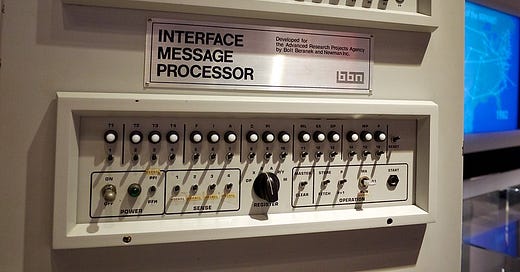Think Forward #13: Long-term and open-ended
The short-term incentives of politicians and the push for immediate applications could limit the potential of a "DARPA for education"
Momentum is building for the federal government to get more involved in the business of education innovation.
Congress has already set aside $30 million to help build R&D the education equivalent of DARPA — the famous military research arm. The proposed bipartisan NEED Act would create a National Center for Advanced Development in Education.
This month, the Education Department’s Institute of Education Sciences launched a grant competition aimed at “leveraging evidence-based principles from the learning sciences with advanced technology to create high-reward, scalable solutions.”
Stronger research and development efforts are sorely needed in American education. But they face the same tension that has stymied R&D across the U.S. government for half a century.
Government is uniquely suited to sponsoring open-ended exploration that can lead to transformational discoveries. But that way of operating is anathema to the short-term incentives of politicians.
In Doing Capitalism in the Innovation Economy, economist and venture capitalist Bill Janeway describes the "three-player game" between government, financial investors, and the market economy that fueled the growth of the U.S. tech sector.
The government marshaled resources toward a big, long-term mission (winning the Cold War). It was uniquely suited to furnishing patient support for researchers who posited and experimented with new technologies without a clear view of how they'd turn out. As Janeway writes:
"[T]he innovations that have repeatedly transformed the architecture of the market economy, from canals to the internet, have required massive investments to construct networks whose value in use could not be imagined at the outset of deployment."
In the late '60s and early '70s, researchers tasked with expanding the frontiers of science and technology devised the precursors to the internet and GPS. In the decades that followed, financial speculators invested in a wide range of efforts to convert those technologies into commercial products. Many of them failed. But the ones that succeeded helped fuel a communications revolution and establish American dominance in computing and software.
The open-ended exploration narrowed after 1973, when an act of Congress limited DARPA's focus to products with immediate military application. The resulting brain drain out of federally supported labs sent a flood of researchers into the private sector — a boon to the nascent tech industry but a loss for American science.
Similar focus on immediate applications colors congressional thinking about R&D in education. As Mark Schneider, the director of the federal Institute for Education Sciences, wrote in a blog post earlier this year:
"As we deploy these new resources, the intent of Congress is clear: While IES has historically sought to balance applied and basic research investments, the ARPA lens clearly calls for a shift toward a more applied, 'use-driven' strategy."
The sponsors of bipartisan education innovation legislation offer some concrete examples of the use-driven strategies that a DARPA for education might pursue. They describe "voice recognition software to assess emerging readiness gaps and dyslexia, and digital learning platforms to help students recover lost learning time from the pandemic."
Those breakthroughs could be a boon for many students and align with the recommendations of our State of the American Student report.
There is a real risk, however, that this focus on immediate applications will draw attention away from more fundamental discoveries — in fields like neuroscience, child development, or cognitive psychology — with the potential not just to help students thrive under the existing assumptions about education and schooling, but to overturn those assumptions with new insights into how children learn.
That’s the kind of inquiry the federal government may be uniquely positioned to support.
Think Fast
A new study shows charter schools on the whole help increase student learning — especially if they are part of charter management organizations (CMOs).
Doug Harris, co-author of another recent national study with a similar headline finding, highlights one implication: “Some of this is kind of mechanical — not in a bad way, it’s just how the sector operates. If you’re a stand-alone, and you do well, you can open another school. Then you become a CMO, and they’re better because they were selected to build on their own success. That’s a positive aspect of the charter model.”
This theory of action — set a high bar for school leaders to develop new models, measure outcomes, encourage proven models to grow — faces abandonment by the left, as teachers unions and their allies draw a harder anti-charter line, and the right, as advocates spurn this heavily engineered approach to school choice in favor of a more freewheeling ethos.This starry-eyed take on AI from venture capitalist Marc Andreessen is worth reading for an optimistic view of the technology's transformative potential. It offers an insightful provocation: Higher intelligence is correlated with all sorts of positive outcomes for humans. Therefore, giving every human access to tools that artificially augment our intelligence should make all our lives better.
A microschool founder describes his approach: "We adapt and shape how we teach and what we teach to each student."
A model blending in-person coaches and online teachers looks less like a positive transformation than a costly and unwieldy response to a teacher shortage.
Final Thought
"The only sure road to real life dystopia is if we convince ourselves dystopia is unavoidable, and fail to try for something better."
- Ada Palmer, a University of Chicago historian, in a Microsoft symposium on the implications of artificial intelligence. Her contribution focused on how AI will deepen a communications revolution that’s challenging existing institutions.
Header image: "BBN IMP connected computers to Arpanet" by donjd2 is licensed under CC BY 2.0.



